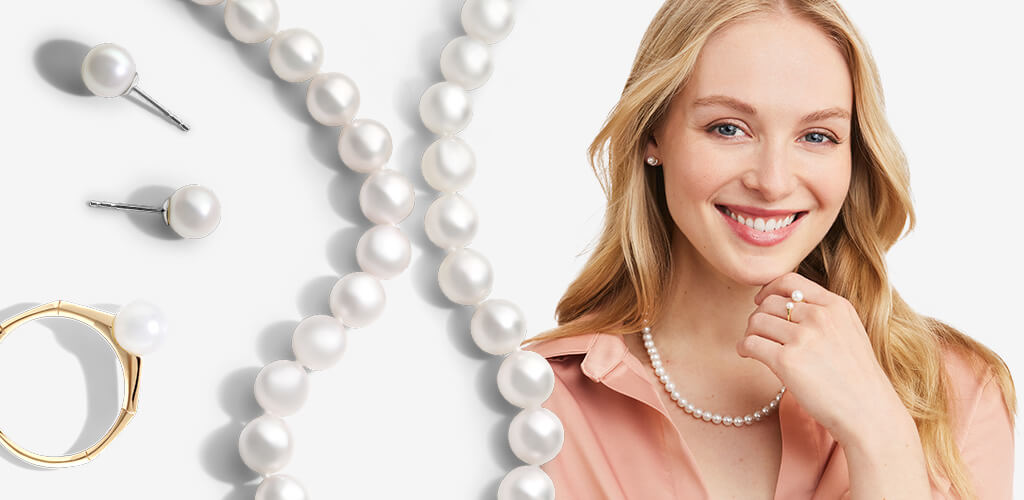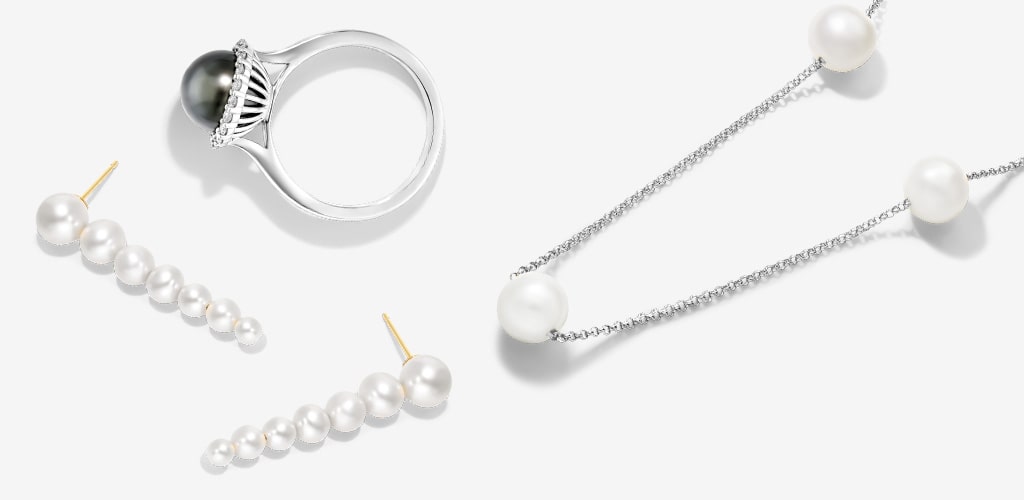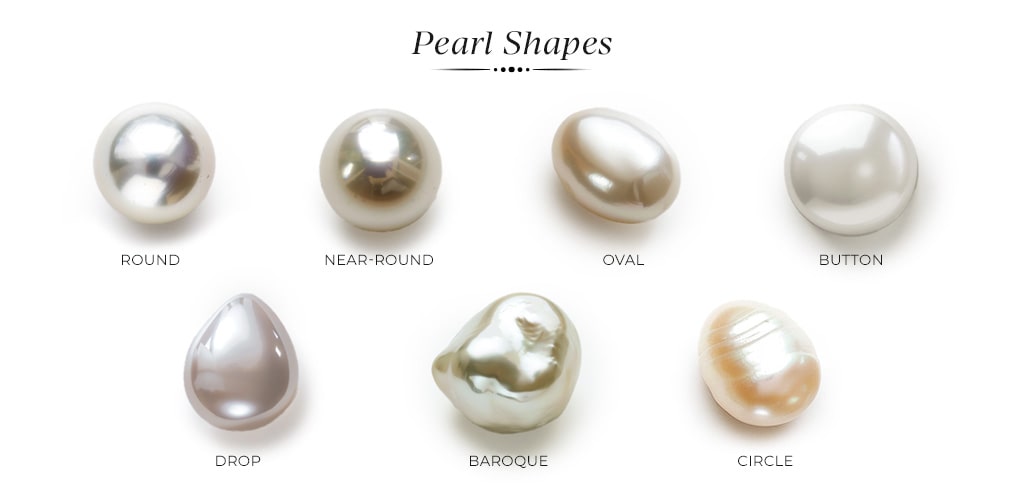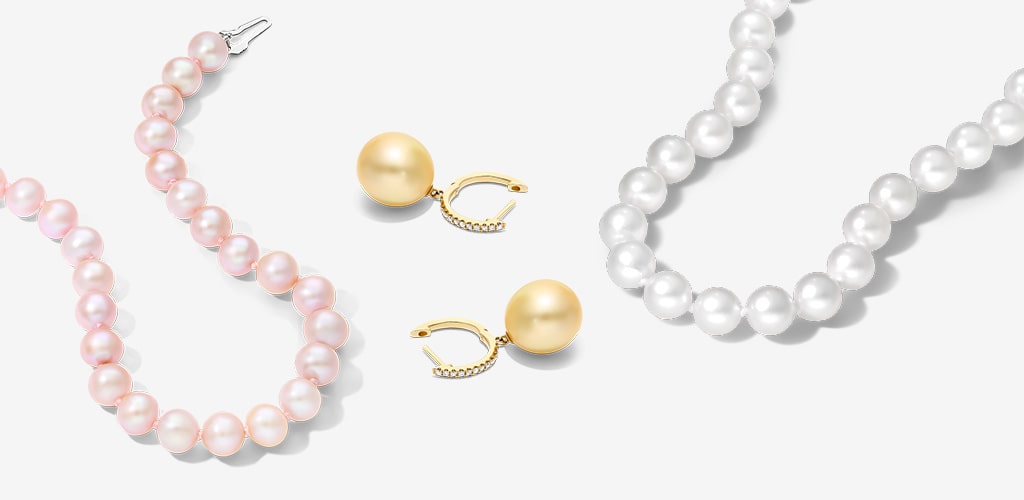
Picture this, you’re just about to head out the door for a long-awaited fabulous girls’ night out. You’re wearing your favorite pearl necklace feeling like the epitome of elegance just like Audrey Hepburn. But it dawns on you, are those beautiful pearls around your neck the real deal or just a glamorous imitation?
We’re here to dive deep and give you all the pearls of wisdom you need on how to tell a real pearl from a fake one. Shell we begin?
Let’s get into what pearls really are. Pearls, the June birthstone, are truly unique, given that they are the only gemstones formed inside living creatures, which may be why they’re often referred to as the queen of gemstones.

Fake pearls, often referred to as faux pearls, synthetic, or imitation pearls, are man-made look-alikes of natural pearls. Unlike genuine pearls, which grow within mollusks like oysters and clams, fake pearls are made from materials such as glass, plastic, or even coated beads.
For some, artificial pearls can still be beautiful and serve as affordable alternatives for those who want the elegance of pearl jewelry without the cost associated with genuine pearls.
One way to test if pearls are real is to touch them and feel the temperature. Initially, real pearls are cold to touch before warming up to your skin. Fake plastic pearls are usually room temperature and you don’t feel any coolness when you touch them.
Keep in mind that fake ones that are made of glass beads can be cool to touch to start with. But it tends to take them longer to warm up against your skin than real pearls.
When you examine real pearls closely or under magnification, you’ll notice tiny irregularities and ridges on each pearl’s surface. In a strand of cultured pearls, you can always see very tiny differences between them, even when they are top quality and well-matched. If the pearls are completely perfect and identical in terms of shape, size, color, and surface characteristics, they are probably fake.
In addition, cultured and natural pearls reflect light differently from the fake ones. The luster of fake pearls has a glassy look and is unnatural.
Did you know that the majority of pearls are rarely round? Pearls come in different shapes including, round, near-round, oval, button, drop, and baroque.
In general, a pearl shape is one of the major value factors when it comes to evaluating and pricing pearls. Round pearls are likely to receive a higher price than pearls of other shapes. But even with a strand of real pearl necklace that is perfectly round, you can still see some slight differences in their pearl shapes.
Keep in mind that if the pearls are completely identical, it’s probably a sign that they’re machine-made.

A surface test is simply checking the surface of the pearl for imperfections, irregularities, and unique characteristics.
Real pearls have:
These are natural features and are known as “pearl growth indicators.”
On the contrary, fake pearls tend to have perfectly smooth surfaces without any natural imperfections. It is often possib
When it comes to detecting fake pearls, the pearl tooth test is one of the most important methods. This text determines a pearl’s softness or durability.
For this test, you’ll simply take a pearl and lightly rub it against the biting edge of your teeth. A real pearl will feel gritty or slightly rough while a fake pearl will feel slippery and smooth. Some fake pearls will not even rub because they have been created using glass or synthetic materials.
Both natural and cultured pearls often have an overtone, a translucent color that appears on the outer surface of a pearl. It is especially noticeable among fine-quality pearls. You’ll see a hint of pink or green over the main pearl color. A real pearl should have natural, unaltered color with a smooth surface and luster similar to a mother pearl’s natural color and brightness.
A fake pearl will most likely have a discolored surface, have one color, and usually have a clear protective coating. As a result of the synthetic material used, it will appear duller than its true reflection. fake.

Often, jewelers must drill directly into pearls to secure them in a setting or string them onto a necklace or bracelet. Examine these holes carefully – do you see any peeling, flaking, or chipped paint? Does that opening appear to be covered in dyes or coatings?
You likely have fake pearls if this is the case. On the other hand, real pearls will have crisp and perfectly clean drill holes.
Another tried and tested method is to hold the pearls in your hand to feel their weight. Fake pearls are more commonly light, so you shouldn’t feel any significant weight. Authentic pearls do, however, have weight to them, so if they feel heavier than you expected, they are most likely real.
Examining the drill hole in pearls is crucial because it can reveal the internal structure and material consistency, indicating whether the pearls are genuine or fake. Real pearls typically have a smooth, consistent drill hole, whereas fake ones may exhibit irregularities or signs of artificial manufacturing.
Yes, some household items can be used for authenticity testing of pearls. These may include rubbing pearls against your teeth (real pearls should feel slightly gritty), checking them under a magnifying glass for surface irregularities, or testing their weight (real pearls are typically heavier than fake ones).
Yes, fake pearls can pass the tooth test to some extent. Some high-quality imitation pearls, such as glass or plastic beads coated with a pearl-like substance, may feel smooth and slightly gritty when rubbed against the teeth, mimicking the sensation of real pearls. However, the tooth test is not foolproof and should be used in conjunction with other authenticity tests for a more accurate assessment.
No, fake pearls don’t always look perfect. While some high-quality imitation pearls can closely resemble real pearls in appearance, others may exhibit noticeable imperfections such as irregular shapes, uneven surfaces, or inconsistencies in color and luster. These imperfections can sometimes help distinguish fake pearls from genuine ones upon close inspection.